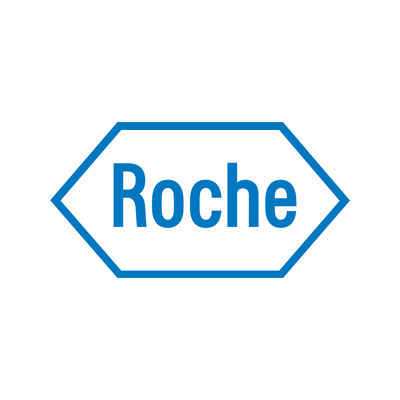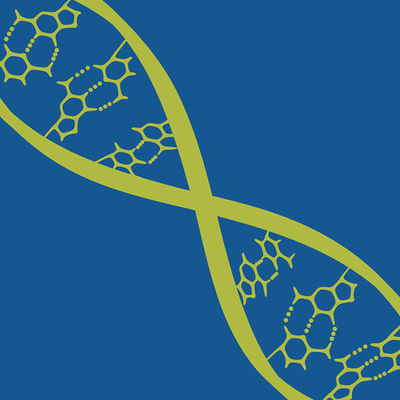预约演示
更新于:2025-05-07
Hyaluronic acid
更新于:2025-05-07
基本信息
别名 透明质酸 |
简介- |
关联
38
项与 Hyaluronic acid 相关的药物作用机制 透明质酸调节剂 [+1] |
在研机构 |
原研机构 |
非在研适应症- |
最高研发阶段批准上市 |
首次获批国家/地区 美国 |
首次获批日期2024-09-13 |
作用机制 透明质酸调节剂 [+1] |
在研机构 |
原研机构 |
非在研适应症- |
最高研发阶段批准上市 |
首次获批国家/地区 美国 |
首次获批日期2024-09-12 |
作用机制 透明质酸调节剂 |
在研机构 |
原研机构 |
在研适应症 |
非在研适应症- |
最高研发阶段批准上市 |
首次获批国家/地区 韩国 |
首次获批日期2024-07-05 |
205
项与 Hyaluronic acid 相关的临床试验CTRI/2025/03/083121
A Phase 3, Randomized, open-label Study of Nivolumab + Relatlimab Fixed-dose Combination with Chemotherapy Versus Pembrolizumab with Chemotherapy as First-line Treatment for Participants with Non-squamous (NSQ), Stage IV or Recurrent Non-small Cell Lung Cancer and with Tumor Cell PD-L1 expression of 1% to 49%
开始日期2025-07-14 |
NCT06325696
Phase IIa Investigation of H01 in Adults With Interstitial Lung Disease (The SOLIS Study)
Background:
Interstitial lung disease affects the tissues that aid the transfer of oxygen and carbon dioxide between the air and the bloodstream. The disease can cause fibrosis, a thickening and scarring of lung tissue. Fibrosis often continues getting worse, and most people with this disease die in 3 to 5 years.
Objective:
To test a study drug (hymecromone) in people with interstitial lung disease or lung fibrosis.
Eligibility:
People aged 18 years and older with interstitial lung disease or lung fibrosis.
Design:
Participants will have at least 7 clinic visits over 5 months.
Participants will have screening and baseline visits. They will have blood tests and tests of their heart function. They will give a sputum sample. Other tests will include:
Spirometry: Participants will breathe in and out through a mouthpiece to measure how much air they can hold in their lungs and how hard they can breathe.
Diffusion capacity of lungs for carbon monoxide: Participants will breathe in a gas that contains a small amount of carbon monoxide. Then they will breathe through a mouthpiece. This test measures how well oxygen moves from the air into the blood.
Resting energy expenditure. Participants will lie still for 30 minutes with a clear dome over their head. This test measures the calories their body burns at rest.
6-minute walk test. Participants will walk at their normal pace for 6 minutes. Their vital signs and blood oxygen levels will be checked.
Hymecromone is a tablet taken by mouth. Participants will take 2 tablets every morning and 2 tablets every night for 12 weeks. Tests will be repeated at study visits.
Interstitial lung disease affects the tissues that aid the transfer of oxygen and carbon dioxide between the air and the bloodstream. The disease can cause fibrosis, a thickening and scarring of lung tissue. Fibrosis often continues getting worse, and most people with this disease die in 3 to 5 years.
Objective:
To test a study drug (hymecromone) in people with interstitial lung disease or lung fibrosis.
Eligibility:
People aged 18 years and older with interstitial lung disease or lung fibrosis.
Design:
Participants will have at least 7 clinic visits over 5 months.
Participants will have screening and baseline visits. They will have blood tests and tests of their heart function. They will give a sputum sample. Other tests will include:
Spirometry: Participants will breathe in and out through a mouthpiece to measure how much air they can hold in their lungs and how hard they can breathe.
Diffusion capacity of lungs for carbon monoxide: Participants will breathe in a gas that contains a small amount of carbon monoxide. Then they will breathe through a mouthpiece. This test measures how well oxygen moves from the air into the blood.
Resting energy expenditure. Participants will lie still for 30 minutes with a clear dome over their head. This test measures the calories their body burns at rest.
6-minute walk test. Participants will walk at their normal pace for 6 minutes. Their vital signs and blood oxygen levels will be checked.
Hymecromone is a tablet taken by mouth. Participants will take 2 tablets every morning and 2 tablets every night for 12 weeks. Tests will be repeated at study visits.
开始日期2025-05-07 |
NCT06046287
Phase IIa Study to Evaluate Daratumumab for Polyneuropathy Associated With MGUS
The goal of this clinical trial is to learn about daratumumab and hyaluronidase-fihj in patients with monoclonal gammopathy of undetermined significant (MGUS) who have been diagnosed with peripheral neuropathy suspected to be cause by paraproteinemia. The main question[s] it aims to answer are:
• how well does this medication help improve MGUS associated peripheral neuropathy
Participants will be asked be asked to get some testing done prior to starting the trial in order for us to assess your nerve damage or peripheral neuropathy. This will include blood tests, a complete neurologic examination, surveys and tests called electromyogram and nerve conduction studies. Participants that qualify for the trial will take DARZALEX FASPRO® once a week for two months, followed by every other week from months 3 to month 6.
• how well does this medication help improve MGUS associated peripheral neuropathy
Participants will be asked be asked to get some testing done prior to starting the trial in order for us to assess your nerve damage or peripheral neuropathy. This will include blood tests, a complete neurologic examination, surveys and tests called electromyogram and nerve conduction studies. Participants that qualify for the trial will take DARZALEX FASPRO® once a week for two months, followed by every other week from months 3 to month 6.
开始日期2025-04-01 |
申办/合作机构 |
100 项与 Hyaluronic acid 相关的临床结果
登录后查看更多信息
100 项与 Hyaluronic acid 相关的转化医学
登录后查看更多信息
0 项与 Hyaluronic acid 相关的专利(医药)
登录后查看更多信息
3,923
项与 Hyaluronic acid 相关的文献(医药)2025-06-01·Journal of Controlled Release
On the adjuvanticity of hyaluronan: The case of a SARS-CoV-2 vaccine
Article
作者: Grigoletto, Antonella ; Pagliari, Matteo ; Genova, Beatrice ; Verin, Ranieri ; Penna, Alessandro ; Sommaggio, Roberta ; Zuccolotto, Gaia ; Tosi, Anna ; Dalla Santa, Silvia ; Barbieri, Vito ; Torrigiani, Filippo ; Bonfante, Francesco ; Dalla Pietà, Anna ; Rosato, Antonio ; Sinigaglia, Alessandro ; Vogiatzis, Stefania ; Pasut, Gianfranco ; Carpanese, Debora ; Barzon, Luisa ; Sofia, Tomasoni
2025-06-01·Journal of Critical Care
Elevated glycocalyx shedding components as the early predictors of unfavorable outcomes in patients after cardiac arrest: A single-center observational study
Article
作者: Su, Chenglei ; He, Dan ; Hu, Shuqun ; Zhao, Ningjun ; Yan, Xianliang
2025-05-01·Journal of Hypertension
Extracellular matrix dynamics in a rat model of pulmonary arterial hypertension: unveiling the role of hyaluronan in disease pathology
Article
作者: Aytekin, Metin ; Altin Çelik, Pinar
21
项与 Hyaluronic acid 相关的新闻(医药)2025-04-24
Halozyme is seeking an injunction to block Merck’s planned commercialization of subcutaneous Keytruda through a patent infringement lawsuit.
Halozyme is not holding back against Merck & Co. in the companies' injectable Keytruda patent dispute, having now escalated a verbal warning into a lawsuit.In a lawsuit filed Thursday in a New Jersey federal court, Halozyme alleges that a proposed subcutaneous formulation of Merck’s popular cancer drug Keytruda infringes 15 of its patents.Those intellectual properties belong to a Halozyme patent family called Mdase, which covers a large group of modified human hyaluronidases. A hyaluronidase protein may allow for under-the-skin administration of otherwise intravenously infused drugs.Halozyme is seeking an injunction to block Merck’s planned commercialization of subcutaneous (SC) Keytruda, which is under FDA review with a decision expected by Sept. 23. The San Diego drug delivery expert is also asking for monetary relief and “an enhancement of damages,” because the alleged infringement is said to be willful, according to its complaint.Even though SC Keytruda has not reached the market, Merck opened itself to patent litigation after publicly laying out its intention to launch the product this year pending FDA approval.The lawsuit comes after Halozyme reached out to Merck for a potential licensing deal and publicly warned that a lawsuit may follow if the two sides couldn’t reach an agreement. That pathway has apparently hit a dead end, as Halozyme now accuses Merck of planning to launch SC Keytruda while “knowingly infringing” on Halozyme’s Mdase patents. “We believe this suit is meritless, and we are confident in our legal position,” Merck said in a statement to Fierce Pharma.To make its SC Keytruda, Merck is using a hyaluronidase called berahyaluronidase alfa, or ATL-B4, from South Korean company Alteogen. The platform has become increasingly popular among pharma companies, as AstraZeneca and Daiichi Sankyo have also signed up to develop subcutaneous versions of their cancer drugs.Merck has argued that ALT-B4 was independently developed by Alteogen and that its sequence is not disclosed in any Halozyme patent.The New Jersey pharma is challenging seven of the Mdase patents with the U.S. Patent and Trademark Office. However, the outcome of that proceeding won’t affect Halozyme's lawsuit, which claims infringement of a broader range of patents. Halozyme is best known for its Enhanze subcutaneous delivery technology based on the recombinant human hyaluronidase PH20 enzyme. As the company studied PH20, its scientists created a library of more than 6,700 additional proteins with modified amino acid chains. That library and further research led to the Mdase portfolio of patents starting in 2016.Although ATL-B4 itself is not in Halozyme’s library, the company claims that many amino acid modifications used in the Alteogen product are actually covered by those 15 Mdase patents. Merck has been aware of Halozyme’s work on PH20s since at least 2009, when the two first had collaboration discussions, according to the complaint. In 2015, Halozyme shared with Merck its ability to subcutaneously deliver Keytruda. During those negotiations, Merck became aware of Halozyme’s patent plans covering modified PH20s.“Merck has refused to find a resolution to its infringement with Halozyme, such that a definite and concrete controversy now exists” between the two companies, Halozyme said in the complaint.Merck developed SC Keytruda to help bolster the top-selling cancer immunotherapy when the original intravenous infusion formulation falls off the patent cliff in 2028. The company hopes to convert about 30% to 40% of patients to the protected SC version within the first two years of launch.Halozyme filed the lawsuit as Merck reported its first-quarter 2025 financial results Thursday. Keytruda sales during the three months grew 4% year over year to $7.2 billion.The lawsuit doesn’t affect Halozyme’s Enhanze program or Merck’s original Keytruda.

专利侵权财报引进/卖出
2025-03-17
LONDON, UK I March 17, 2025 I
AstraZeneca and Alteogen Inc. have entered into an exclusive license agreement for ALT-B4, a novel hyaluronidase utilising Hybrozyme™ platform technology. Under the terms of the agreement, AstraZeneca will acquire worldwide rights to use ALT-B4 to develop and commercialise subcutaneous formulations of several oncology assets. Alteogen will be responsible for clinical and commercial supply of ALT-B4 to AstraZeneca.
Subcutaneous formulations have the potential to offer many advantages including time savings for patients, clinical staff, and health systems due to shorter administration times.
Cristian Massacesi, Chief Medical Officer and Oncology Chief Development Officer, AstraZeneca, said: “We are dedicated to advancing new medicines for people with cancer and that includes new methods of delivery which are more convenient for patients, physicians and healthcare systems. We look forward to collaborating with Alteogen on several assets in our portfolio with the goal of bringing new subcutaneous options to patients that can transform the way cancer care is delivered.”
Dr Soon Jae Park, Chief Executive Officer of Alteogen, said: “We are excited to expand our Hybrozyme™ Technology by collaborating with AstraZeneca in their development of novel subcutaneous cancer medicines to meet the needs of patients.”
Financial considerations
AstraZeneca will make an upfront payment to Alteogen and additional payments upon achievement of specific development, regulatory and sales-related milestones. Additionally, Alteogen will receive royalties on the sales of the commercialised products.
The transaction does not impact AstraZeneca’s financial guidance for 2025.
Notes
ALT-B4
ALT-B4 is Alteogen’s proprietary human recombinant hyaluronidase enzyme developed utilizing Hybrozyme™ technology. ALT-B4 can enable the large volume subcutaneous administration of drugs that are typically administered as an IV infusion. ALT-B4 does this by temporarily hydrolyzing hyaluronan in the extracellular matrix.
AstraZeneca in oncology
AstraZeneca is leading a revolution in oncology with the ambition to provide cures for cancer in every form, following the science to understand cancer and all its complexities to discover, develop and deliver life-changing medicines to patients.
The Company’s focus is on some of the most challenging cancers. It is through persistent innovation that AstraZeneca has built one of the most diverse portfolios and pipelines in the industry, with the potential to catalyse changes in the practice of medicine and transform the patient experience.
AstraZeneca has the vision to redefine cancer care and, one day, eliminate cancer as a cause of death.
AstraZeneca
AstraZeneca (LSE/STO/Nasdaq: AZN) is a global, science-led biopharmaceutical company that focuses on the discovery, development, and commercialisation of prescription medicines in Oncology, Rare Diseases, and BioPharmaceuticals, including Cardiovascular, Renal & Metabolism, and Respiratory & Immunology. Based in Cambridge, UK, AstraZeneca’s innovative medicines are sold in more than 125 countries and used by millions of patients worldwide. Please visit
astrazeneca.com
and follow the Company on social media
@AstraZeneca
.
SOURCE:
AstraZeneca
引进/卖出
2025-03-12
近年来,血脑屏障(Blood–Brain Barrier,BBB)的健康状况越来越受到神经科学及临床医学界的关注。作为大脑抵御外界有害分子和病原体的重要“防线”,BBB 的任何细微破坏都可能导致大脑内稳态的失衡,诱发神经退行性疾病或加速大脑老化。而斯坦福大学 Carolyn Bertozzi 教授(2022年诺贝尔化学奖得主)和 Tony Wyss-Coray 教授团队最新发表在Nature期刊的一篇文章,则将研究焦点聚集在 BBB 内皮细胞“外衣”——糖萼(glycocalyx)的异常改变,进一步揭示了其在衰老与神经退行性疾病中的重要影响。
一
糖萼:BBB 的“第一防线”
糖萼是一层富含蛋白多糖、糖蛋白和糖脂等大分子的网状结构,包覆在血管内皮细胞的表面。它不仅能够物理阻隔大分子物质进入脑组织,同时也在细胞信号转导、黏附、形态稳定等方面扮演关键角色。
常见的组成:蛋白多糖(如肝素硫酸、软骨素硫酸等)、黏蛋白结构域糖蛋白(mucin-domain glycoproteins)以及透明质酸等多种多糖分子。
主要功能:维持血管通透性、调控内皮细胞间紧密连接以及防止血液中有害因子渗透到大脑内部。
然而,研究者发现,随着年龄增长以及在阿尔茨海默病(Alzheimer’s Disease)、亨廷顿病(Huntington’s Disease)等神经退行性疾病中,糖萼分子组成会发生显著改变。这些改变可能直接破坏 BBB 的屏障功能,加速脑内环境的炎症或神经毒性过程。
二
衰老与疾病状态下的脑血管糖萼
该论文针对衰老及神经退行性疾病的血管内皮细胞,开展了多层次研究,核心探索了以下几方面:
1、形态学观察
利用透射电镜(TEM)结合特定金属染色(如硝酸镧),可直观看到年轻小鼠与衰老小鼠脑血管内皮表面糖萼层的厚度及覆盖率。结果显示,年老及患病小鼠的糖萼层明显变薄或覆盖不足。
文章图1脑内皮糖萼在衰老过程中高度失调。a. 血脑屏障和脑内皮糖萼层的示意图。b. 年轻(3个月大)和老年(21个月大)小鼠的皮层毛细血管的透射电子显微镜图像,采用硝酸镧染色。
2、基因组学与蛋白组学
通过对年轻和衰老小鼠脑血管内皮细胞进行转录组测序(RNA-seq),发现与糖萼合成与修饰相关的基因在衰老和神经退行性疾病状态下普遍出现表达异常,尤其是黏蛋白型 O-聚糖修饰途径显著下调。
化学修饰/富集脑血管内膜蛋白并进行质谱分析,确认了多种黏蛋白结构域糖蛋白在内皮表面的含量及修饰水平发生紊乱。
3、功能学验证
以特异性酶(StcE)干预小鼠脑血管内皮细胞表面黏蛋白结构域糖蛋白,发现会大幅增加血脑屏障通透性并诱发脑出血。
通过基因治疗载体(AAV)在衰老小鼠的脑内皮细胞中过表达核心黏蛋白 O-聚糖合成酶(如 C1GALT1、B3GNT3),可显著恢复糖萼结构的完整性,减轻 BBB 渗漏,并改善小鼠的认知与神经炎症指标。
三
糖萼失调与 BBB 损伤的“恶性循环”
1、衰老和疾病导致黏蛋白型 O-糖基化酶合成下调该研究特别强调在衰老、阿尔茨海默病与亨廷顿病中,与黏蛋白型 O-糖基化相关的酶(如 C1GALT1、B3GNT3)水平明显下降。这种修饰减少会使得内皮表面的黏蛋白结构域糖蛋白含量或成熟度受损。
2、糖萼破坏带来血管通透性急剧上升无论是酶学降解还是基因敲低相应糖基化酶,都能导致血管紧密连接断裂增多、活性氧(ROS)水平提升以及血浆蛋白(如白蛋白、免疫球蛋白)渗透进入脑组织的现象加剧。严重情况下甚至可能导致脑出血(文章图3)。
文章图3脑内皮黏蛋白型O-糖基化减少会增加血脑屏障的通透性和脑出血风险
3、修复糖萼有望恢复 BBB 屏障并改善神经功能在小鼠实验中,通过AAV介导在大脑内皮细胞中过表达核心黏蛋白 O-聚糖相关酶,能在显著程度上修复 BBB 渗漏,并让衰老小鼠在空间记忆、条件恐惧等认知行为学指标上得到提升(文章图5)。这表明针对糖萼进行干预,或许可成为未来缓解衰老及神经退行性疾病 BBB 功能障碍的一种全新策略。
文章图5 恢复黏蛋白型O-糖基化可增加老年小鼠的神经元稳态,减少胶质细胞炎症,并改善记忆和学习能力。
四
潜在启示:从“护城河”到“修城墙”,糖萼治疗前景广阔
1、早期干预新思路 衰老和神经退行性疾病常见特征之一就是血脑屏障破坏。若能在疾病早期靶向修复或维持糖萼结构,或许能够减轻大脑炎症与神经元损伤,从而延缓病程发展。
2、 基因治疗与糖生物学结合 文章中使用了基因治疗载体(AAV)直接提升核心 O-糖基化酶的表达,成功逆转 BBB 受损,这为基因治疗在神经系统疾病的精细化干预提供了新思路。今后或能与其他蛋白酶、糖基化调控分子综合应用,进一步提高疗效和特异性。
3、 多学科交叉的新热点 BBB 研究、基因治疗、糖生物学与神经退行性疾病等多领域的交叉,为发展新的诊断及疗法打开了可能性。随着技术手段升级,未来或可见更多类似针对黏蛋白型糖基化、透明质酸、肝素硫酸等特定靶点的研究涌现,推动脑科学和再生医学走向更个性化、更精准化的阶段。
五
小结
这项新发表的研究不仅揭示了 糖萼失调是衰老与神经退行性疾病中血脑屏障功能紊乱的重要原因,更通过修复黏蛋白型 O-糖基化酶表达,成功恢复了血脑屏障的完整性并改善了衰老小鼠的脑功能,为未来相关临床转化探索指明了一个崭新的研究方向。
本研究用到的AAV载体特征如下:
如需进一步了解该研究的全部细节与数据分析,欢迎点击文末“阅读原文/Read more”,前往 Nature 官网阅读完整论文。
参考文献 Shi SM, Suh RJ, Shon DJ, et al. Glycocalyx dysregulation impairs blood–brain barrier in ageing and disease. Nature(2025). https://doi-org.libproxy1.nus.edu.sg/10.1038/s41586-025-08589-9
关于派真生物
基因疗法
分析
对领域进行一次全面的分析。
登录
或

生物医药百科问答
全新生物医药AI Agent 覆盖科研全链路,让突破性发现快人一步
立即开始免费试用!
智慧芽新药情报库是智慧芽专为生命科学人士构建的基于AI的创新药情报平台,助您全方位提升您的研发与决策效率。
立即开始数据试用!
智慧芽新药库数据也通过智慧芽数据服务平台,以API或者数据包形式对外开放,助您更加充分利用智慧芽新药情报信息。
生物序列数据库
生物药研发创新
免费使用
化学结构数据库
小分子化药研发创新
免费使用




